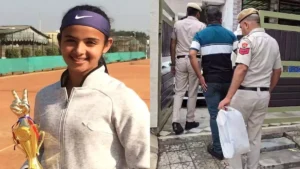Bollywood Onscreen Baddies: The Mayanagri Story

Mumbai: The portrayal of villains in Bollywood has undergone a remarkable transformation over the decades. From the quintessential evil-doers of the early years to the complex, morally ambiguous characters of contemporary cinema, the evolution of the Bollywood villain reflects broader changes in society, storytelling, and the film industry itself.
The Early Years: Clear-Cut Evil
In the early decades of Bollywood, particularly from the 1940s to the 1960s, villains were depicted as clear-cut embodiments of evil. These characters were often motivated by greed, lust, or power, and their actions were unmistakably wrong. Villains like Pran in “Madhumati” (1958) or K.N. Singh in “Howrah Bridge” (1958) were designed to be hated by the audience. Their lack of redeeming qualities made it easy for viewers to root for the hero, who represented good in its purest form.
These villains were often caricatures of evil, with exaggerated mannerisms, distinctive appearances (such as scars, eye patches, or unique costumes), and menacing voices. They were the antithesis of the virtuous hero, and their defeat was seen as a triumph of good over evil, reinforcing moral lessons.
The 1970s: The Rise of the Anti-Hero
The 1970s brought a significant shift in Bollywood’s portrayal of villains with the emergence of the “angry young man” archetype, best exemplified by Amitabh Bachchan. Films like “Deewaar” (1975) blurred the lines between hero and villain, introducing characters who were driven to crime by social injustices. Bachchan’s characters often operated in the gray areas of morality, challenging the audience’s perception of right and wrong.
In this era, villains like Ajit in “Zanjeer” (1973) or Amjad Khan as Gabbar Singh in “Sholay” (1975) became iconic. Gabbar Singh, in particular, redefined the Bollywood villain. His ruthless behavior, memorable dialogues, and distinct appearance made him a cultural phenomenon. Gabbar was not just a character; he became a symbol of fear and lawlessness. Despite his evil nature, he was charismatic, and his larger-than-life persona made him as much a star as the film’s heroes.
The 1980s and 1990s: The Complex Villain
The 1980s and 1990s saw the villain in Bollywood becoming more complex and multidimensional. Characters were no longer purely evil; they had backstories, motivations, and sometimes even redeeming qualities. This era witnessed the rise of Amrish Puri, whose portrayal of Mogambo in “Mr. India” (1987) became legendary. Mogambo was a blend of old-school villainy with a touch of eccentricity, delivering lines like “Mogambo khush hua” that have become a permanent part of Bollywood’s lexicon.
Amrish Puri’s portrayal of Thakur Durjan Singh in “Karan Arjun” (1995) and Bhau Thakur in “Virasat” (1997) showcased villains who were deeply rooted in societal structures, often representing the darker side of feudal power. These characters were not just obstacles for the heroes but were also symbolic of larger societal issues.
During this time, Bollywood also began to explore the psychological aspects of villainy. Characters like Shah Rukh Khan‘s Rahul in “Darr” (1993) or Ajay Devgn‘s Vikrant in “Deewangee” (2002) were depicted as obsessive and mentally unstable, adding layers of psychological depth to the archetype of the villain.
The 2000s: The Humanized Villain
One of the most iconic villains of this era was Sanjay Dutt as Kancha Cheena in “Agneepath” (2012). Kancha was not just a menacing figure but also a deeply scarred individual, both physically and emotionally. His ruthlessness was contrasted with his tragic backstory, making him a more empathetic character despite his villainous actions.
Nawazuddin Siddiqui‘s portrayal of Faizal Khan in “Gangs of Wasseypur” (2012) further exemplified this trend. Faizal was a product of his environment, shaped by a cycle of violence and revenge. His transformation from a timid young man to a feared gangster was portrayed with such nuance that audiences could understand, if not entirely sympathize with, his descent into villainy.
The Modern Era: The Anti-Villain and Moral Ambiguity
One of the most striking examples of this is Ranveer Singh‘s portrayal of Alauddin Khilji in “Padmaavat” (2018). Khilji was a brutal and ambitious ruler, but Singh’s portrayal infused the character with charisma, making him both terrifying and fascinating. Despite his ruthless actions, Khilji was depicted as a man with desires and vulnerabilities, challenging the audience to see him as more than just a villain.
Another modern portrayal is Saif Ali Khan as Udaybhan Rathod in “Tanhaji” (2020). Udaybhan was depicted as a complex character, motivated by loyalty to his emperor and personal honor, rather than mere malice. His actions, while antagonistic to the film’s hero, were driven by a code of conduct, adding depth to his role as a villain.
The roots of crime dramas in Bollywood can be traced back to the 1940s and 1950s, with films like “Kismet” (1943) and “Shree 420” (1955. Films like “Don” (1978) further popularized the gangster genre, introducing stylish criminals who were as charismatic as they were dangerous. These films combined elements of thrillers, action, and drama, creating a new template for Bollywood crime movies.
Ram Gopal Varma emerged as a key figure in this genre with films like “Satya” (1998) and “Company” (2002).
Films like “Raees” (2017) and “Sacred Games” (2018) have brought new dimensions to the genre, incorporating elements of political intrigue, personal vendetta, and even dark comedy.
In the future, Bollywood’s crime dramas are likely to become even more diverse and layered, exploring the psychological, social, and political dimensions of crime in ways that challenge and engage audiences.









